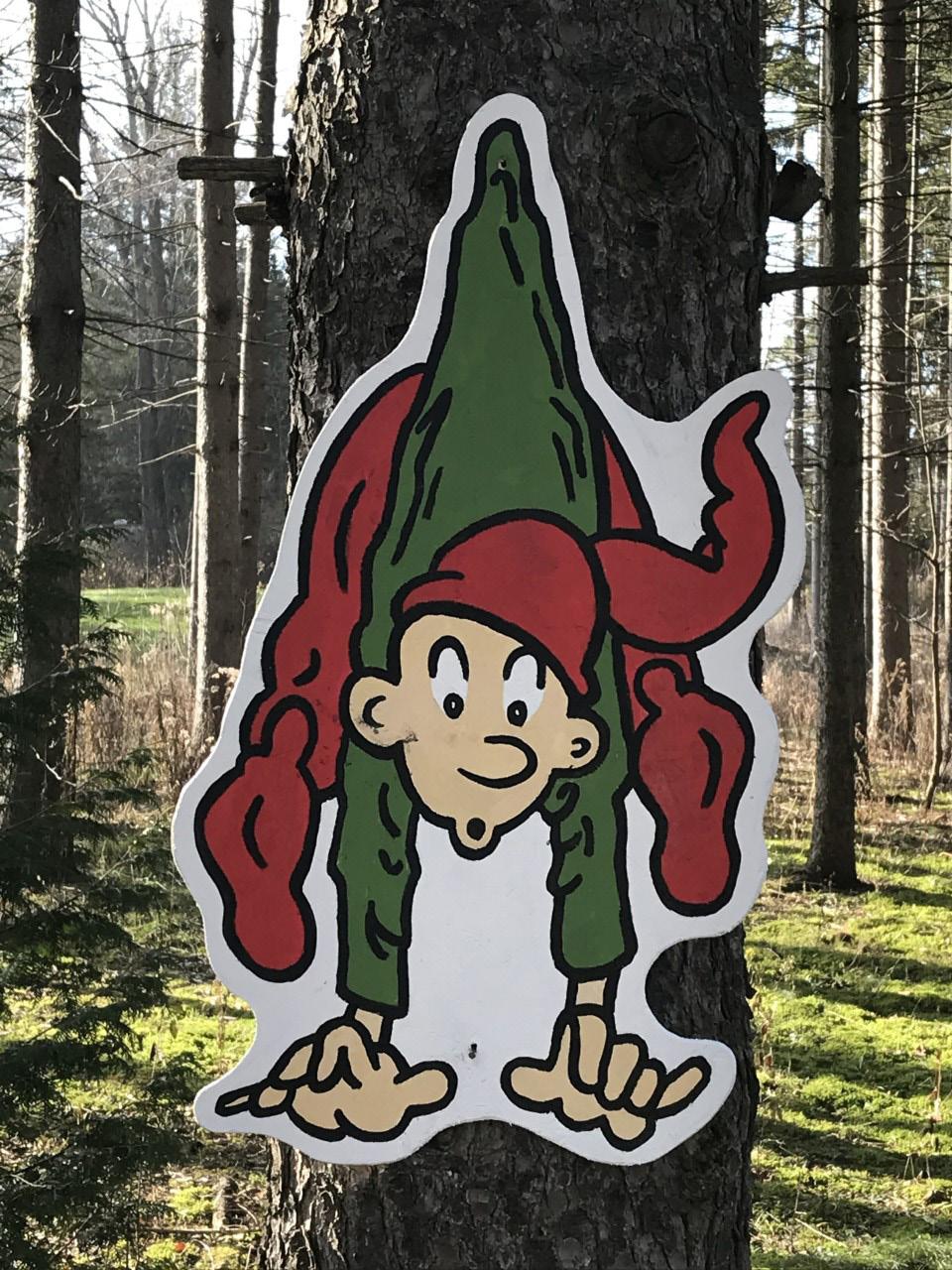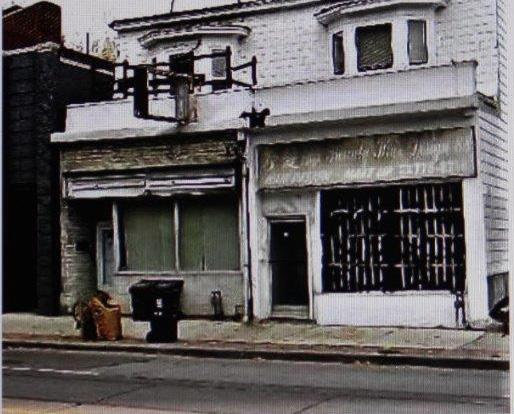
4 minute read
President’s Corner....................................................p 2
Kravlenisser. That is what you can find in the park surrounding the Danish Sunset Villa in Ontario Canada. The park has been the gathering place for Danes in Ontario for more than 70 years. This article is edited from the Sunset Villa Association Bulletin with permission from Lisa Olsen the writer of the article. Last year the Association created large wooden copies of famous Danish cartoonist Frederick Bramming’s Nisser for the new Neisse trail. The retro throwback to childhood in the 1950’s-1980’s was meant to spark joy with kids and all of us that grew up with these fun Nisser in our homes. We contacted Brammings’s family, as Frederik (1911-1991) had long ago past away, as has his wife Kirsten (1911-1993). His children, Bo(76), Michael(87) and Anne(79) are now the owners of his copyrights. From Bo we learned that Frederik was a very gifted cartoonist, who made drawings of politicians, famous athletes, football players, actors etc for the newspaper Politiken for many years. He was also one of the first to make short commercial cartoons in Denmark. Then he created his famous Kravlenisse (directly translated as Crawling Nisse) Nisse Folklore. For hundreds of years it was a tradition that a Nisse lived on farms and were responsible for the mysterious or bad things that happened if they were not treated well with porridge (called Risengrød.. if you haven’t tried it, you must). A traditional Nisse was drawn-like with long beards, teasing personalities and evil things on their minds. Bramming's Nisse were started as Bramming hated the mean concept and in 1947 just after WWII, he created his own version of Kravlenisser. He really loved the time around Christmas and he wanted to create some figures who looked energetic, full of life and always doing something amusing, innocent and with a positive approach-just like children. An so his Nisser were born. They were a huge succes right from the start, which took him totally by surprise. His warm and caring Kravlenisser are still availed for sale through pobra.com or select Christmas retailers in Denmark. So if you’re visiting Sunset Villa make sure to take a walk around the park and see these cheerful Nisser. A thank you to the Bramming family for their permission to display Nisser in honour of their father Frederik Bramming.
Edited and submitted by Jonna Easterby with thanks to Lisa Olsen and Sunset Villa Association
Advertisement
Join us for the 75th Jubilee Celebration
of the founding of the Danebod Folk Meeting!
This year’s meeting will be a virtual event, including speakers, singing, stories, and community
Tentative Speaker Topics: Current events of 1946; History of the Danebod Folk Meeting; Climate Change; Danish Literature; Racism: How to Diminish the Gap; Politics of Healing
Registration materials available at danebodfolkmeeting.org
For further information, email or call: Danebod.Folk.Meeting123@gmail.com (507) 247-3000
SAVE THE DATE August 18-20, 2021
By Ruth Sen-Roy lodge 184 Bluewater Mermaid, Sarnia, Canada/Port Huron
Danish and Canadian connection to Olga Alexandrovna, daughter of Danish princess Dagmar renamed Empress Maria Feodorovna of Russia. Olga was sister to the last Tsar of Russia. Dagmar had escaped the Russian Revolution in 1917 along with her daughters Xenia and Olga. Xenia settled in London England. Olga came along with her husband and two sons with Dagmar to Denmark. They bought an Estate called Vidore Estate close to Copenhagen where they lived until Dagmar’s death. Then the sisters Xenia and Olga sold the estate to Nova Nordisk a pharmaceutical company. Olga stayed in Denmark where she bought a farm close to Copenhagen called Knudsminde Farm. Beside running the farm Olga was Apartment where Grand Duchess Olga reposed always painting and she was involved with Russians living in Denmark. Her two sons both joined the Danish Army and both married danish women. Due to accusation that Olga and a Danish Catholic Bishop were conspiring against the Soviet Union, the Danish Government could no longer protect the family from Stalin’s regime. Olga and her family then exiled to Canada in 1948. They bought a farm close to Campelville, Ontario, not far from Toronto where they lived until retirement. Doing her life in Canada Olga continued to paint. and Olga became very attached to the Russian Church called Christ The Savior Cathedral in Toronto and the congregation there. For their retirement the family bought a small house in Cooksville much closer to Toronto. Olga lived in this house until she could not take care of herself anymore. When she became ill, she was admitted to Toronto General Hospital and she was diagnosed with cancer. Her husband had died in 1958, so Olga moved in with a friend on Gerrard Street in Toronto. It was a simple upstairs apartment; a hair dresser had a business on first floor. It was by choice that Olga had a simple and quiet life both in Denmark and in Canada. Olga died in 1960 she was 78 years old and she is buried at York Cemetery in Toronto next to her husband. Her son Guli died in 1984 (he married a Danish woman Ruth and had two children, Xenia and Leonid), and son Tihon died in 1993 (he married a Danish woman Agnete). Since Olga was a small child, she loved to paint. Her paintings done on canvas, but she also painted on China. Her favorite motif was flowers and landscapes. Over the years she produced more than 2000 work of art. Her art provided an income for her family and the charitable causes she supported. She had several exhibitions mostly in Europe. Some of her art work is owned by the British Royale family and the Norwegian Royal family. In Denmark there are 100 pieces of work at Ballerup Museum, in Peterstrup, close to Copenhagen.




